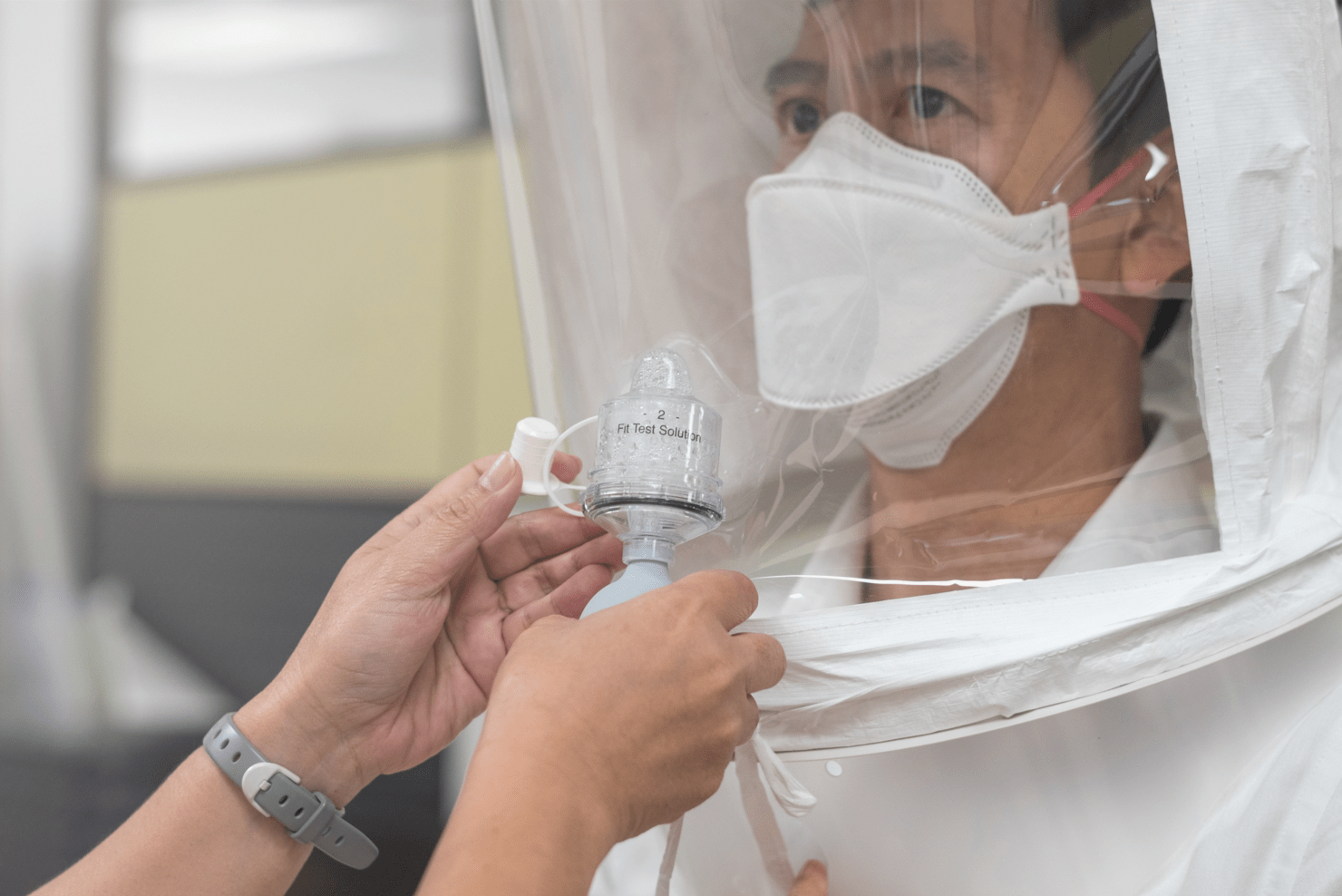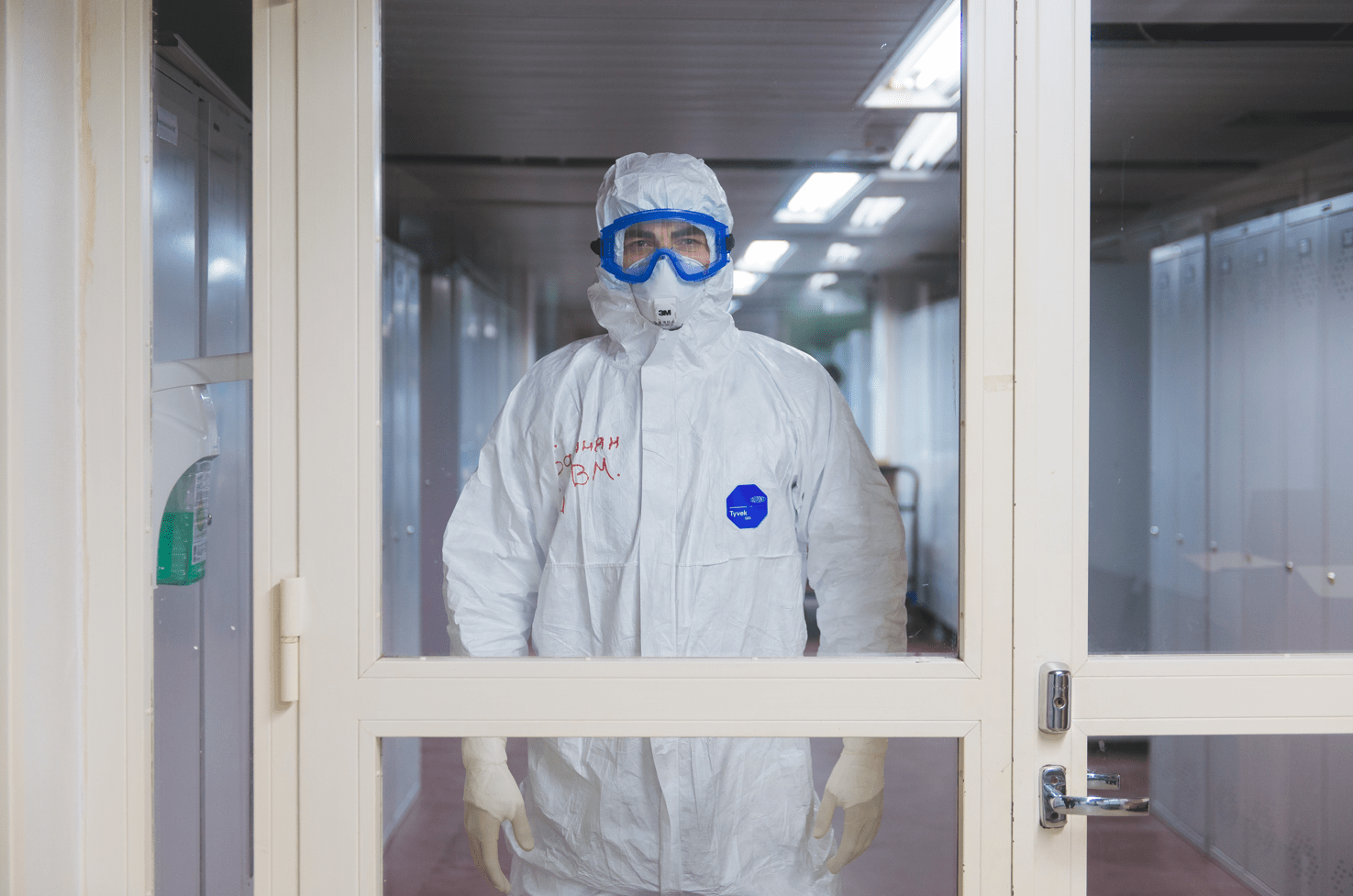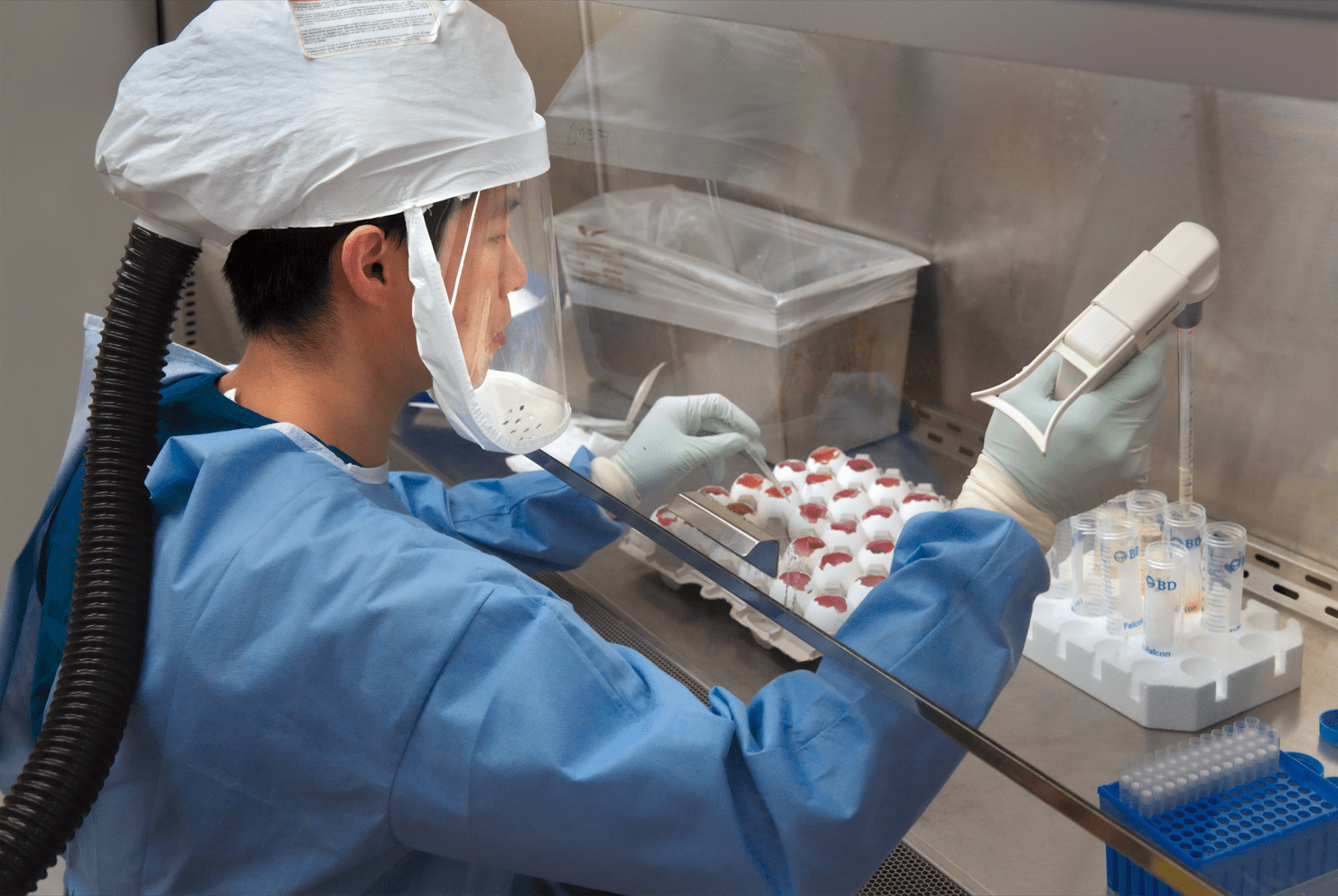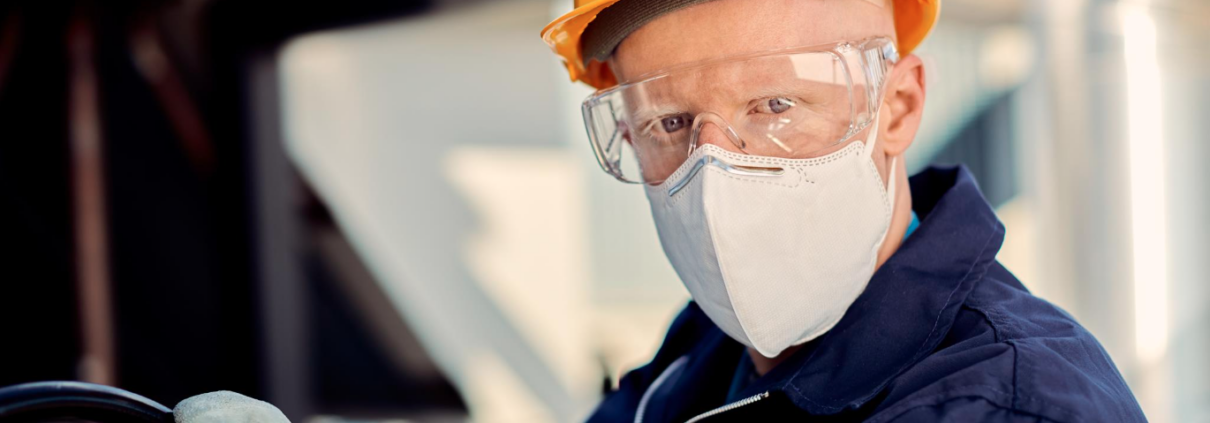Safeguarding the Workforce: A Look at Mask Fit Testing in Top Industries of Kitchener-Waterloo
It’s The Employment Law
Protecting employees of Kitchener, Waterloo and Guelph is the employer’s responsibility! The Ontario Health and Safety Act (OHSA) mandates that employers make every reasonable effort to protect the health and safety of all workers. Protecting workers from hazardous, infectious diseases is a precaution all employers must take.
Companies that work in areas such as construction, manufacturing, health, and dental care, automotive, food processing and packaging, agriculture, and landscaping may not be aware that mask fit testing certifications are required for labourers when employers provide a N95 mask, half-face mask, or a full-face mask to their workers or if the worker feels unsafe in performing their task. Employers are liable to pay fines when audits reveal that they did not provide adequate protection for their employees.
Personal Protective Equipment (PPE) protects people from the risk of accidents or from adverse effects on one’s health. PPE are products such as safety helmets, gloves, eye protection, safety footwear, high-visibility clothing, safety harnesses and respiratory protective equipment. This blog especially focusses on respiratory protective equipment.
The pandemic made everyone aware of the importance of using respiratory protective equipment to safeguard the workforce across various industries. In the growing region of Kitchener-Waterloo, respiratory care is pivotal to ensure the health and safety of employees. This blog focuses on the significance of respiratory care in some of the top industries in the region to protect workers and maintain a productive work environment. When it comes to respiratory care, mask fit testing is a core requirement that is legislated by the Ministry of Labour.

4 Top Questions About Mask Fit Testing
What is a mask fit test?
Mask fit testing is a procedure used to determine the effectiveness of a respiratory mask, such as half-face respirator, a full-face respirator or a N95 mask. The purpose of a mask fit test is to certify there is a proper seal on the wearer’s face. The test ensures that the mask fits securely and snugly, without any gaps or leaks that could allow harmful particles or pathogens to enter. For example, if a person passes their mask fit test on a 3M 6200(M) ½ face respirator, they are certified solely on that MAKE (3M) and MODEL (6300)) mask. If another respirator or mask is to be used by the wearer, a new mask fit certification must be performed.
During the fit test, the wearer dons the mask and is exposed to a hypoallergenic, non-toxic bitter, or sweet-tasting aerosol. Based on the test method, either the wearer tastes this aerosol or an instrument measures a break in the seal. If this occurs, this can indicate a poor fit and a potential break in the seal against one’s facial surface. A proper fit test certification is crucial, especially for healthcare workers or individuals working in high-risk environments. This will ensure the respirators/ masks provide maximum protection efficiency against any airborne contaminants.
What is the Difference Between a Qualitative Vs a Quantitative Mask Fit Test?
A qualitative mask fit test and a quantitative mask fit test are two different testing approaches that assess the effectiveness of a respiratory mask on a wearer to ensure a proper facial seal.
1. Qualitative Mask Fit Test
With a qualitative fit test, the test subject wears the mask and is exposed to this aerosol. The wearer is wearing a hood during this process to create an enclosed environment around their head to contain the aerosol. Typically, a harmless, bitter (Bittrex), or sweet-tasting (saccharin) aerosol is used as the test agent. The mask fit specialist performing the fit test, observes the reaction of the wearer outside the mask-wearing area to this test agent. If the wearer detects the taste of this test agent, it indicates a break in the mask seal, suggesting an improper fit or donning error occurred by the wearer. This mask fit test method is relatively simple and does not require highly specialized mask fit equipment.

2. Quantitative Mask Fit Test
On the other hand, quantitative fit test, uses a specialized piece of equipment that measures the actual fit of the respirator or mask on the wearer’s face. This approach uses a particle counting device that counts the number of airborne particles both inside and outside of the mask. By comparing these particle counts, a “fit factor” is calculated, which calculates the protection level provided by the mask. A quantitative mask fit test is more precise and reports the numerical value of the mask’s effectiveness when sealing out airborne contaminants. This mask fit test approach is most used by fire fighters or workers that are exposed to toxic gases, such as H2S.

Both qualitative and quantitative mask fit tests are essential methods to ensure the proper mask fit for a wearer and used to determine the performance of respiratory masks. This information is essential when working in high-risk environments and protection against airborne hazards is crucial. The choice of the mask fit test method depends on several factors. This can include the specific needs of the workplace or setting, regulatory requirements, available resources, and the ability of the wearer to taste the bitter or sweet aerosol.
What is the Mask Fit Test Certification?
The mask fit test delivers a 2-year certification, and it follows the current CSA Z94.4-18 standard under OHSA in Canada. During a certification session, the following topics are covered:
- Choosing the right respirator or mask
- Respirators use and limitations.
- The Sensitivity Test
- The core “physical” fit test
- How to don a mask and perform user seal checks
- Common storage and maintenance instructions
- Masks change frequency and mask limitations.
For more commonly asked questions about mask fit testing, click here.
Industries in the Kitchener-Waterloo and Surrounding Areas Where Mask Fit Testing is Used.
Manufacturing Sector
The manufacturing industry in Kitchener, Waterloo, and Guelph relies heavily on PPE to reduce workplace hazards. This includes protective eyewear and gloves, respiratory masks and specialized footwear. Workers in the manufacturing sector wear a wide range of PPE to guard against flying debris, chemical exposure, and potential accidents.

Healthcare and Medical Facilities
Healthcare workers are on the frontlines, battling various health threats, such as COVID, and the proper use of PPE is of the utmost importance. In this case they wear N95 masks , face shields, gowns, and gloves. Health care workers are trained to understand the significance of each piece of equipment as it becomes vital in protecting them and their patients.
Construction Industry
Construction sites are inherently hazardous. Workers in this industry rely on PPE to avoid potential accidents. They wear hard hats, high-visibility vests, steel-toed boots, and respirators just to name a few essential PPE items. The blog highlights equipment and certification programs implemented to ensure compliance with respiratory care.
Food Processing and Packaging
In the food processing industry, strict hygiene standards are crucial. The standard practices to maintain sanitation and avoid contamination, include the use of hairnet, aprons, in certain cases respirators (in cleaning equipment), and gloves. To uphold the quality and safety of food products, the effective use of PPE is essential in this sector.

Technology and Innovation
Even in technology-driven industries in Kitchener-Waterloo, using PPE holds importance to introduce specific safety measures such as in laboratories and research centers to protect employees from potential chemical exposure or other. The role of using effective PPE in this sector is essential in fostering innovation to ensure employee well-being.
Conclusion
Mask fit testing stands as a critical respiratory care component in ensuring the security and welfare of workers across the diverse industries in Kitchener, Waterloo, Guelph, and Cambridge. By exploring the use of proper mask fit testing certifications in manufacturing, healthcare, construction, food processing, and technology sectors, we gain further insight into how organizations can continue to prioritize safety in the workplace. Companies should ensure the mask fit providers are adhering to this Occupational Health and Safety standard by using the proper qualitative or quantitative fit testing approaches dictated by the CSA standard and 3M.
As the region continues to grow and thrive, the effective use of mask fit testing alongside the use of other PPE remains a foundational aspect in maintaining a secure and productive workforce. Every step of the way, businesses and employees can strive to work together towards a safer and healthier future while emphasizing the importance of wearing proper PPE with required CERTIFICATIONS!





Leave a Reply
Want to join the discussion?Feel free to contribute!